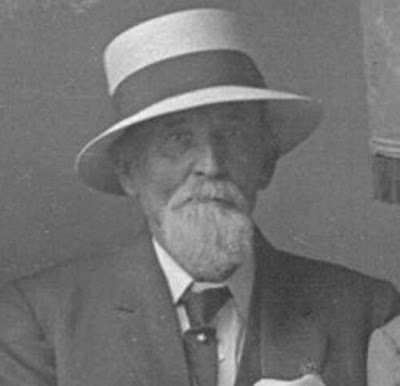In my early days of researching my family, I did not bother with the non-population schedules. I thought, OK, he was a farmer, big deal. But once I took a GOOD look, a REALLLLY good look, I understood the value of reading those fuzzy columns. Of course, I had to get a blank form so that I could read the questions in order to understand the answers. Fortunately for us all, the census forms are available at National Archives and Records Administration (archives.gov).
 |
| Richard Hosier (1816-1899 Nansemond Co, VA) photo courtesy Jake Dog on Find-a-grave |
A study of the
1880 non-population schedule for agriculture gave me a better understanding of
Richard Hosier, a 3X great-grandfather on my father’s side. Although he lived
in Nansemond County, Virginia, he farmed in the Sycamore community of
neighboring Norfolk County. Apparently, Sycamore no longer exists, but if I
COULD find it on a map, I bet it would be very close by.
The first set of
questions are about TENURE, that is, whether he was the owner or a renter.
Richard indicated he rented not for pay but for a share of the products. Now I
wonder whether he ever owned his own farm or if he always worked for someone
else. At age 65, he was considered “old.” Today, such an arrangement might be
considered a “retirement” job or a hobby, but I do not know about 1880. There
was no Social Security check to fall back on. If the children were not taking
care of him, Richard needed to provide for the family somehow.
Answers to the questions
about the acreage and value of the farm indicate that Richard worked on a
mid-size farm comparable to those of most of his neighbors. His had 60 acres
tilled while the largest farm had 175 tilled acres and the smallest 5. Richard’s
farm was valued at $3000; the largest was valued at $15,000 and the smallest at
$100. Like Richard’s farm, most were valued between $2000 and $6000.
None of the
farmers in Richard’s neighborhood boasted large numbers of livestock. Practically
all of them had at least one milk cow; a few reported owning one or two sheep
and swine. Only two made butter and cheese to sell. However, when it came to
chickens, Richard owned among the largest number - 20. Only one other farmer sold more eggs than
Richard.
Richard was the
largest producer of Indian corn having reaped 300 bushels off 30 acres. He was on par with his neighbors in acres and
bushels of Irish potatoes but did not bother with sweet potatoes as most had
done. Failure to keep up with the Joneses – or in this case, the Mackeys,
Bruces, Carrolls and Carneys – probably explains why the total market value of
his produce was so low ($1000) that only one farmer reported a lower amount,
and that was the one with the 5-acre farm.
A brief mention
in the newspaper in 1888 shows that clearly Richard grew other vegetables
besides potatoes.
Amy Johnson Crow continues to challenge genealogy
bloggers and non-bloggers alike to think about our ancestors and share a story
or photo about them. The challenge is “52 Ancestors in 52 Weeks.”
Wendy
© 2019, Wendy Mathias. All rights reserved.




Farming had such a varied definition in those days. Interesting to learn.
ReplyDeleteWonder if they still keep detailed records like this? Funny, I never thought of asparagus as something grown back then but something more modern, but why, who knows?
ReplyDeletebetty
I love the agriculture schedules. They never knew how helpful they’d be!
ReplyDeleteI love those ag census schedules! It's almost like a tour around the farm. You've done a great job finding Richard's place among his neighbors with regards to farm size, produce and animals grown, and value. So interesting.
ReplyDelete